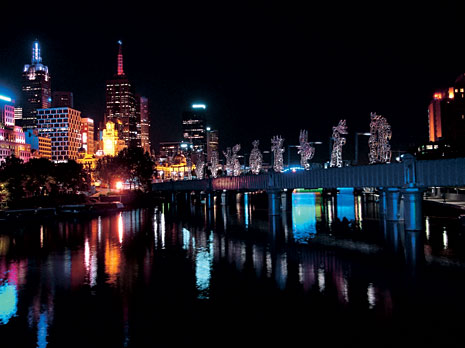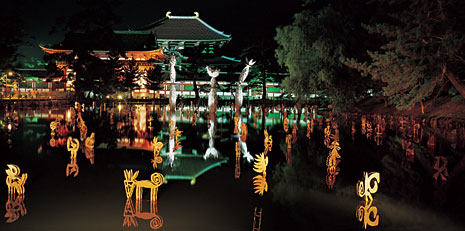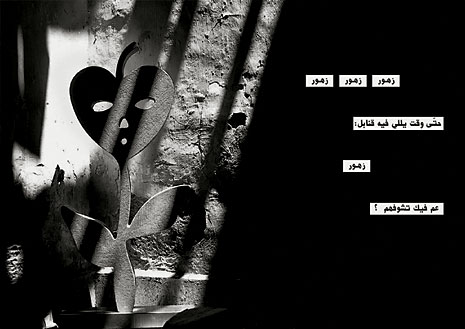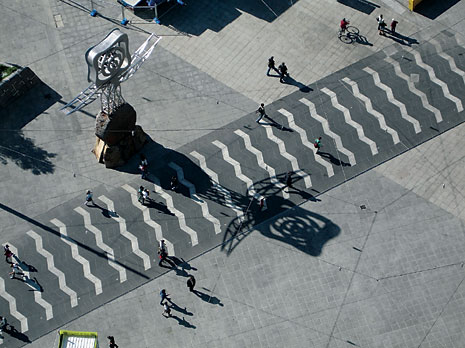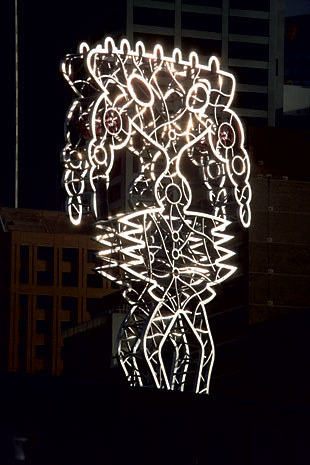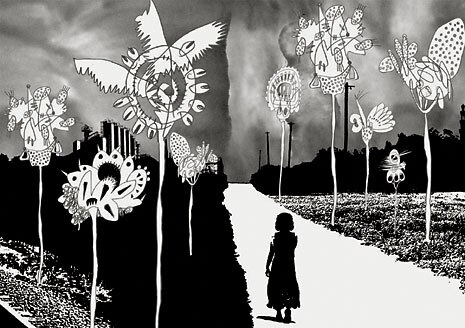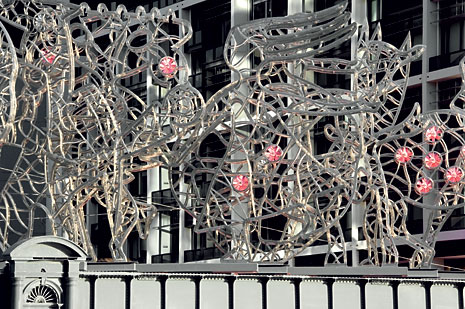No argument on Beirut can disregard the relationship between distruction and memory; as in Berlin and other cities that have experienced equally tormented events, the story of reconstruction coincides impressively with the systematic attempt to remove the signs of past violence. “In 1993 I went back to Beirut. The centre of the city, left to refugees and down-and-outs, was a desolate place. The widespread postwar amnesia was almost worse that the war years, with an unhappy and voluntarily anaesthetised population.” Lebanese artist and architect Nadim Karam, founder of the Atelier Hapsitus, has placed a number of anthropomorphic and zoomorphic shapes around the city, icons connected to an enigmatic bond, conceived to activate in the population a sleeping imagination, to create dreams. The Urban Toys, that are like solidified shadows, had to belong strictly to the realm of the ephemeral; exhibited on the roofs and streets of Beirut for a period of around three years, they continually appeared and disappeared, changed place, cropped up in groups or were scattered around unexpected places. Their presence was expressly anti-monumental, a manifesto against the art of propaganda, the “sculpture in the square”. The relationship of these works with public space echoed the estranged and parasitic ways of street art, with, however, the aggressive component, the guerrilla rhetoric, filtered out. Karam’s passion was in fact entirely aimed towards poetic creation, the weaving of stories. “Destruction and creativity are never on the same plane; both work based on the void, one using nihilism to suppress freedom of thought, the other using the absurd as the basis for a story.” His structures are signs susceptible to various interpretations that can be reconfigured according to complex paths that boycott the violent simplification of religious and identifying symbols. After Beirut, Karam installed new shapes in London, Tokyo, Melbourne and in particular in Nara in Japan, a lake that faces the ancient Todaiji Buddhist temple where the short circuit between place and memory reached an intensity perhaps never achieved in urban contexts. These works are documented in a book, Urban Toys (Booth-Clibborn Editions, London, 2006), which in turn resembles more a work of art than a book. Together with Arup, the Atelier Hapsitus has developed a project for a pedestrian bridge that connects the marina at Beirut with the centre of the city. With five paths that overlay one another and intersect, the Net Bridge translates into architecture the narrative mechanism set up by the sculptures: crossing it prevents an unequivocal choice being made and instead compels deviations and accidental encounters. According to the programme, the bridge should be built by 2008. War permitting.
